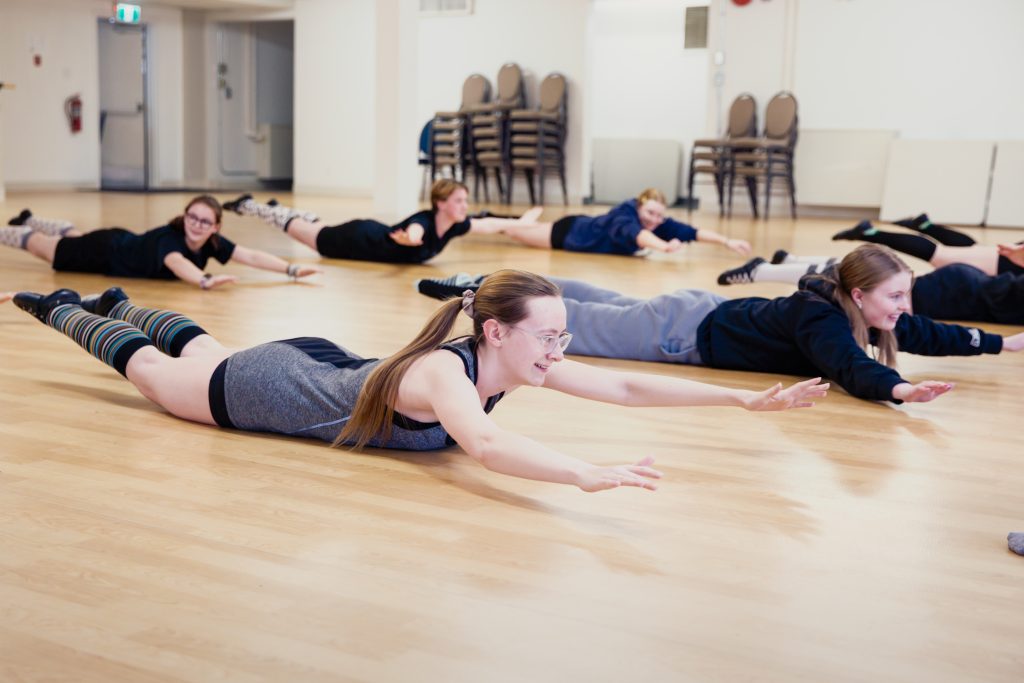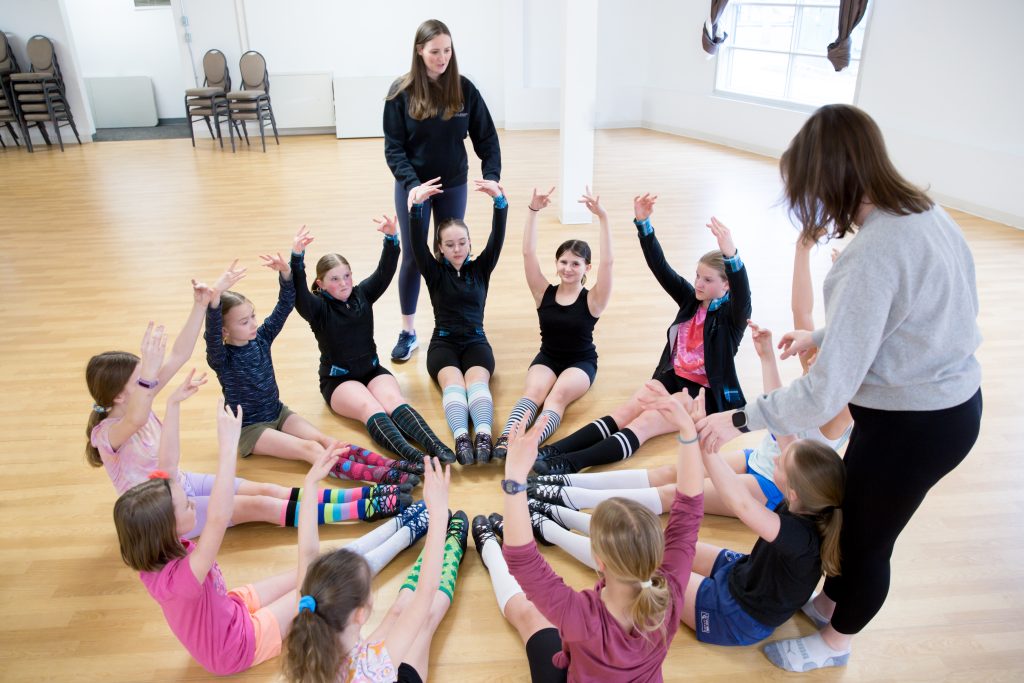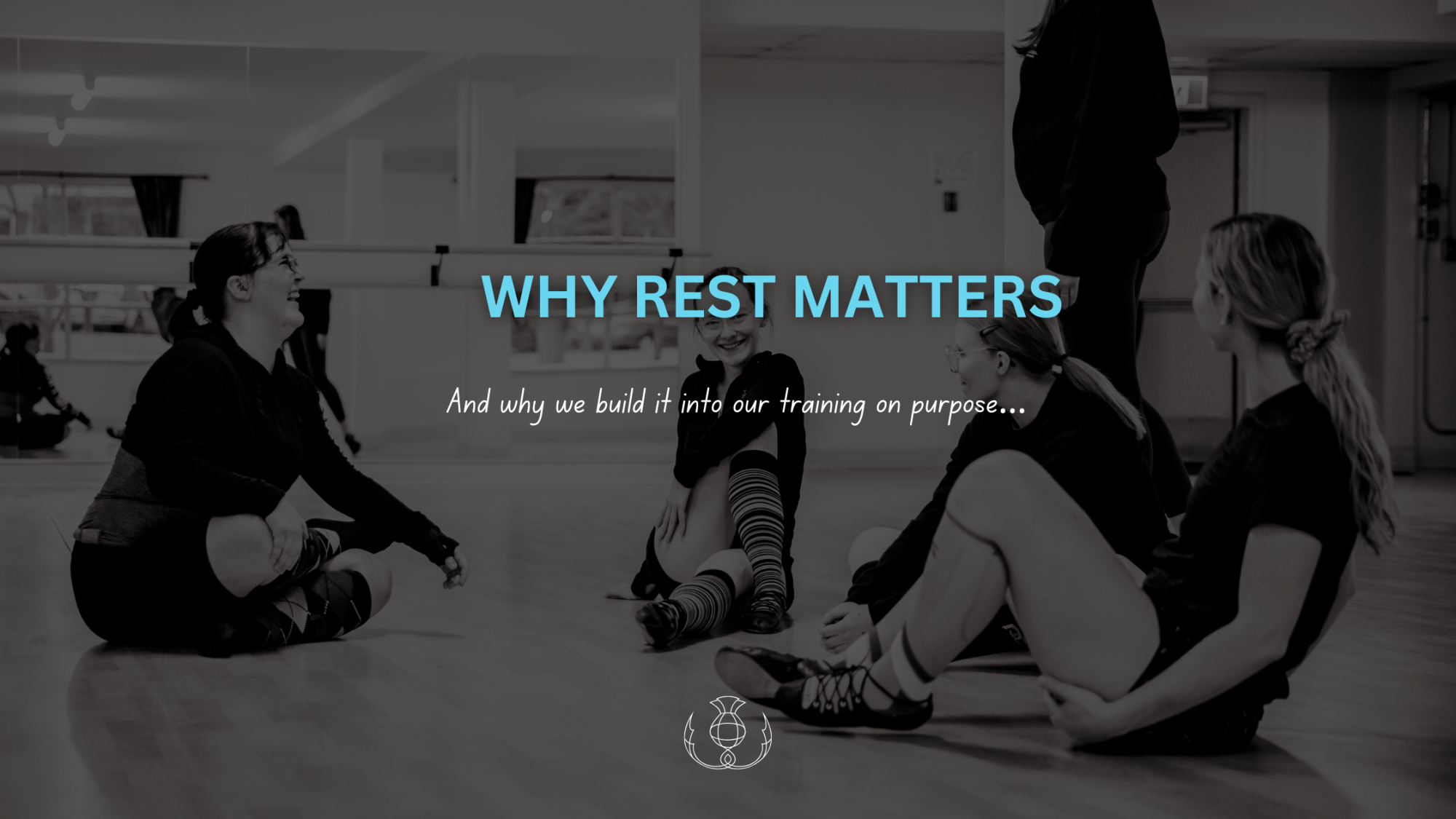Highland dancers are definitely high achievers, and we obviously love and encourage it! But… we’ve noticed that high achieving often translates to constant dancing, with no downtime, making rest or recuperation seem like taboo words. We see people dancing through repetitive-use injuries, strains and sprains, and debilitating pain because they’re afraid of falling ‘behind.’
We’re all for the enthusiasm our dancers have for the art, and how they love performing and competing to push themselves. However, we are also vividly aware that almost every other sport has built-in rest periods and a specified training season that the athletes take very seriously. Why isn’t this happening in Highland?
We’ve wondered about this for a while, and did some research. What we’ve come to is that rest isn’t just something we allow at CSHD; it’s something we prioritize. We require. On purpose, with intention. Because it’s more than just nice to have a break. It’s a necessary part of a comprehensive training program, especially for children and teens.
We aren’t talking about getting your solid 8–10 hours of sleep a night (though that’s super important, too!)—we are talking about mandatory, enforced rest days, weeks, and months throughout the year, purposefully placed to maximize performance, giving young bodies a chance to recharge, grow properly, heal from overuse, and recuperate.
Luckily for us, just when we started to piece together our own research on the importance of rest in growing bones and joints, we had the opportunity to incorporate dance-focused research from Erika Mayall (@dancephysioerika), a dance physiotherapist. She’s a former dancer herself and is doing some incredible work in the dance physio space (if you haven’t heard her podcast, do yourself a favour and listen!). Like us, she is hyper-aware of the unique strain dance puts on a body, and just how detrimental a lack of a season or rest periods is to dancers.
There’s so much to it, but if we had to narrow it down to a few key reasons we incorporated rest, they’d be:

Rest is when the body adapts to training.
Rest time is where a lot of magic happens! Muscles rebuild and brains get the opportunity to file movements and patterns into long-term, easily accessed memory. This cements new pathways, skills, and abilities. Ever come back from a break and you’re suddenly able to do a previously unreachable movement? That’s your brain working in the background while you’re busy (or not busy) resting. It’s easy to feel like rest is a break from progress, but we now know that rest is where progress has a chance to solidify and stick around.
Rest protects the body and mind from burnout.
Not only are Highland dancers high achievers, they’re pretty resilient. Dancing at a Highland Games that’s either 35 degrees or pouring rain? No issue. Performing at tattoos on uneven cobblestone or cement? Bring it on. But even the most resilient people need time to let their bodies and brains recover. And especially people like us who tend to be pretty hard on both—perfectionism is a beast! Our bodies take a real beating with the constant impact, while competitions take even the most well-balanced mind and play games with it! Burnout, of either body or mind, is a real concern—we all know good dancers who just couldn’t take the gruelling schedule and relentless emotional effort.
But! When you insert some magic rest time, your body has time to recuperate from the constant strain, and the mind has the opportunity to take a breather. When dancers come back, they come back revitalized, pain-free, and raring to go!
Rest isn’t lazy. It’s a necessity.
One of the biggest mindset shifts we teach our dancers is that rest is not something you “earn” through exhaustion or something to try and avoid. It’s an integral part of their training. You wouldn’t skip learning one of the championship dances and expect to do well, so why would you expect to while skipping recovery time?

It feels like a bold move in a world where champions seem to do competitions every weekend all year long, appearing to never tire out and to expend endless energy. We’ve shifted our focus to give our dancers way more of a chance to stave off injury, and avoid quitting in 5 years from burnout. We’re hoping that this mindset shift can help us navigate the Highland world that focuses mainly on the next immediate win, and instead look to the health and longevity of our dancers in 10, 15, and 30 years’ time. And we’re feeling pretty confident about it because research shows that athletes who take prolonged rest periods do better than constantly training peers!
We are one year into intentionally incorporating rest into our training, and we’ve seen some pretty incredible things. At the end of 2024, we had approximately 50% of our top-level dancers nursing some kind of repetitive-use injury. By the end of 2025, training harder than ever before, that number dropped to two, and their injuries were way more minor. As an added bonus, our dancers came back from off-season revived and recharged. We see dancers way more mentally balanced and excited about their seasons, and due to the rest, they can take a more active approach to their in-season training, too.
We just finished a mandatory no-dance post-season, and are gearing up to start our off-season cross-training. We can’t wait to welcome dancers back injury-free, refreshed, and ready to keep moving forward.

